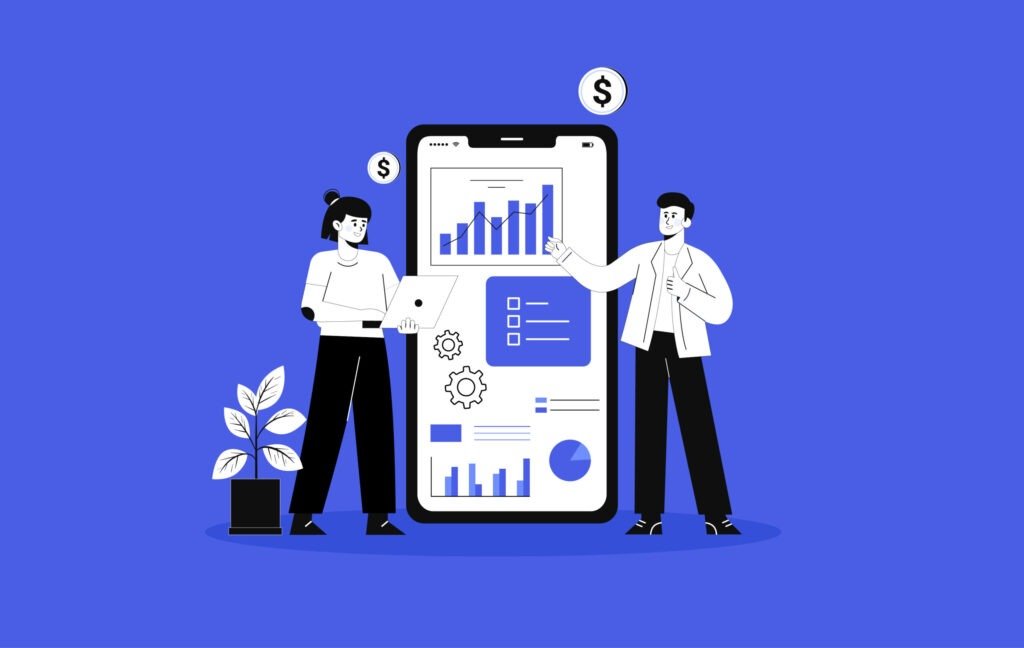In the fast-paced world of stock trading, having a powerful, user-friendly app can be the key to staying ahead. With the increasing demand for mobile trading solutions, developing a stock trading app is a lucrative venture. This comprehensive guide will walk you through the essentials of stock trading app development, from concept to deployment, ensuring you create a robust and competitive product.

1. Understanding the Market
1.1. Market Research
Conduct thorough market research to understand the needs and preferences of your target audience. Identify the top players in the market, analyze their strengths and weaknesses, and find your unique selling proposition (USP).
1.2. Regulatory Compliance
Stock trading apps must comply with financial regulations. Ensure you understand the legal requirements in your target markets, including data protection laws and financial regulations like GDPR in Europe or FINRA in the USA.
2. Key Features of a Stock Trading App
2.1. User Registration and Authentication
Provide a seamless and secure registration process. Implement multi-factor authentication to enhance security.
2.2. User Dashboard
Create a comprehensive dashboard where users can view their portfolio, market trends, and personal trading history.
2.3. Real-time Market Data
Integrate APIs that provide real-time market data. This feature is crucial for users to make informed trading decisions.
2.4. Trading and Investment Options
Offer a variety of trading options, including stocks, ETFs, and options. Ensure the buying and selling process is straightforward and quick.
2.5. Analytics and Reports
Provide detailed analytics and reports, helping users to analyze their performance and make better investment decisions.
2.6. News and Alerts
Keep users informed with the latest market news and customizable alerts for significant market movements.
2.7. Customer Support
Offer robust customer support, including live chat, email, and phone support, to assist users with their queries and issues.
3. Technology Stack
3.1. Frontend Development
Choose technologies like React Native or Flutter for cross-platform development to ensure your app works smoothly on both iOS and Android devices.
3.2. Backend Development
For backend development, consider using Node.js or Django. Ensure your backend can handle high volumes of transactions securely.
3.3. Database Management
Opt for databases like PostgreSQL or MongoDB, which are capable of handling large amounts of data efficiently.
3.4. API Integration
Integrate with financial APIs like Alpha Vantage, IEX Cloud, or Yahoo Finance for real-time market data, and Plaid for secure banking integrations.
4. Development Process
4.1. Planning and Prototyping
Start with detailed planning and create wireframes and prototypes to visualize the app’s design and flow.
4.2. UI/UX Design
Focus on creating an intuitive and visually appealing user interface. Ensure the user experience is seamless and engaging.
4.3. Development
Begin with frontend and backend development, integrating the necessary APIs and ensuring all features function correctly.
4.4. Testing
Conduct thorough testing, including unit testing, integration testing, and user acceptance testing, to ensure the app is bug-free and performs well under various conditions.
4.5. Deployment
Deploy the app to the Apple App Store and Google Play Store. Ensure you follow their guidelines for a smooth approval process.
5. Post-Launch Activities
5.1. Marketing and Promotion
Create a comprehensive marketing strategy to promote your app. Utilize social media, content marketing, and paid advertising to reach your target audience.
5.2. Continuous Improvement
Gather user feedback and continuously update your app to fix bugs, introduce new features, and improve performance.
5.3. Security Updates
Regularly update your app’s security features to protect users’ data and maintain compliance with regulatory standards.
6. Monetization Strategies
6.1. Subscription Plans
Offer premium features through subscription plans, providing users with advanced analytics, personalized advice, or ad-free experiences.
6.2. Transaction Fees
Charge a small fee for each transaction made through the app.
6.3. Advertisements
Integrate non-intrusive ads within the app to generate additional revenue.
Conclusion
Developing a stock trading app is a complex but rewarding process. By following this comprehensive guide, you can create a powerful, user-friendly, and secure stock trading app that meets the needs of modern investors. Remember, continuous improvement and user feedback are key to staying competitive in this dynamic market.
Call to Action
Are you ready to turn your stock trading app idea into reality? Contact our expert development team today to start your journey in creating a cutting-edge stock trading app that stands out in the market.